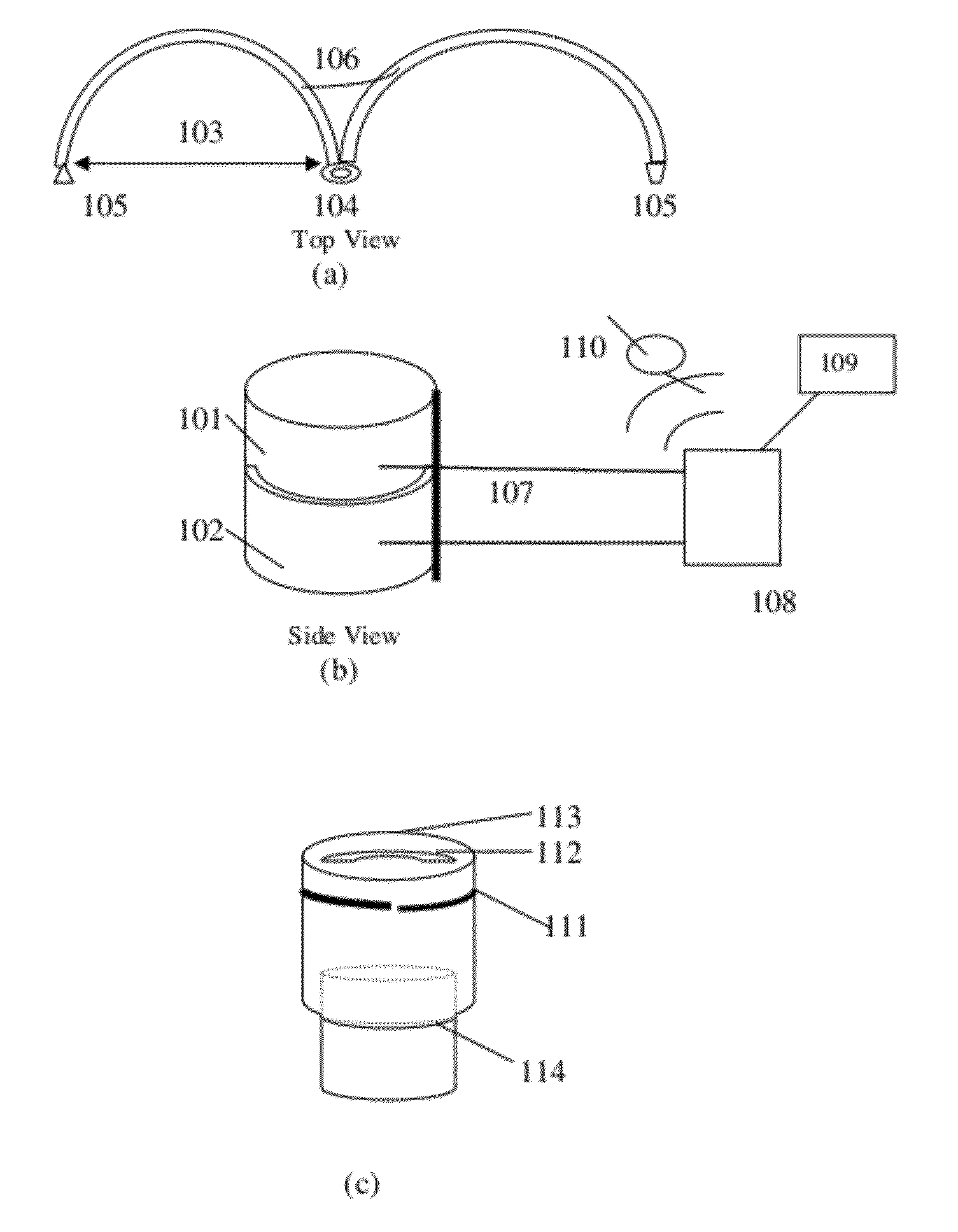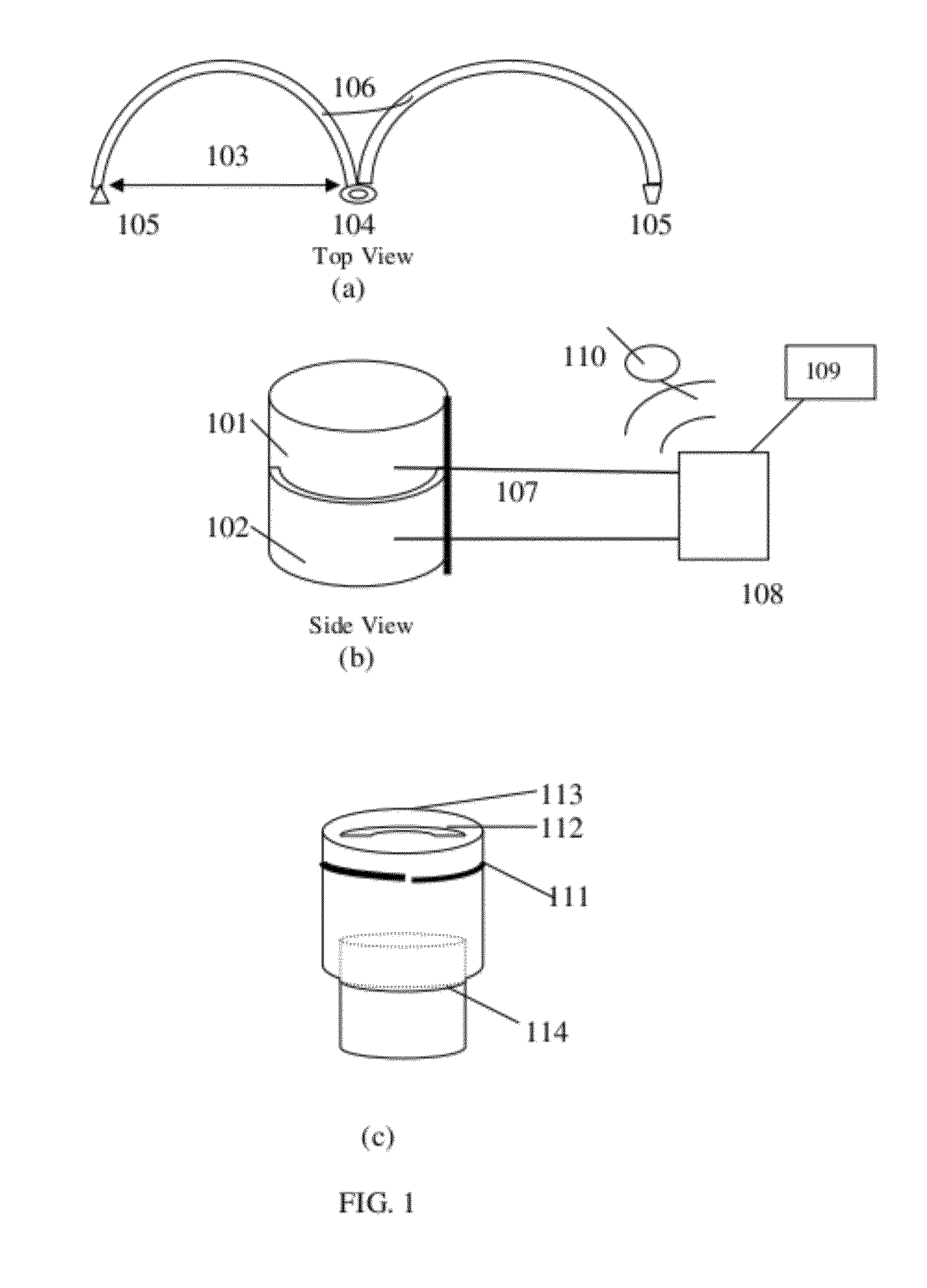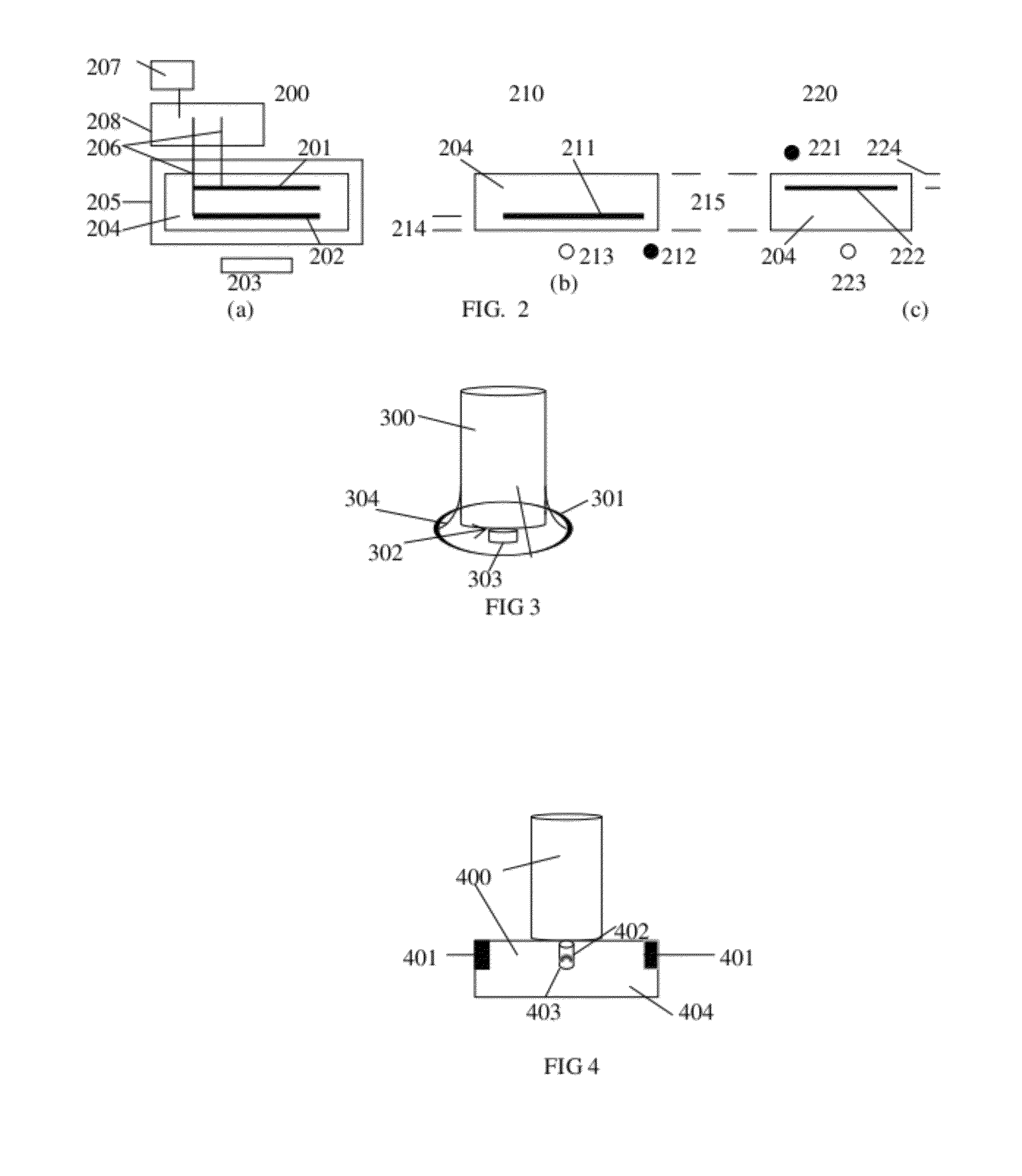Microchlorine generation for Anti-biofouling
a technology of microchlorine and biofouling, applied in the field of oceanic antibiofouling, can solve the problems of disturbing the habitat in which the system operates, sediment can be a problem, etc., and achieve the effects of reducing negative environmental impacts, reducing power consumption, and prolonging the operation of the sensor
- Summary
- Abstract
- Description
- Claims
- Application Information
AI Technical Summary
Benefits of technology
Problems solved by technology
Method used
Image
Examples
Embodiment Construction
[0024]Embodiments of the present invention provide a retrofit hydrolization of salt water, which includes seawater for production of directed halogen biocides in situ. The following description is presented to enable one of ordinary skill in the art to make and use the invention and is provided in the context of a patent application and its requirements.
[0025]Various modifications to the preferred embodiment and the generic principles and features described herein will be readily apparent to those skilled in the art. Thus, the present invention is not intended to be limited to the embodiment shown but is to be accorded the widest scope consistent with the principles and features described herein.
[0026]SeaLite Engineering continues to perform research to understand the effect of free and combined chlorine and bromine on the several stages of biofouling in coastal waters. In preliminary work on the biofouling problem and using chlorine generation through hydrolysis, research was condu...
PUM
| Property | Measurement | Unit |
|---|---|---|
| volume | aaaaa | aaaaa |
| gravity | aaaaa | aaaaa |
| mechanical | aaaaa | aaaaa |
Abstract
Description
Claims
Application Information
 Login to View More
Login to View More - R&D
- Intellectual Property
- Life Sciences
- Materials
- Tech Scout
- Unparalleled Data Quality
- Higher Quality Content
- 60% Fewer Hallucinations
Browse by: Latest US Patents, China's latest patents, Technical Efficacy Thesaurus, Application Domain, Technology Topic, Popular Technical Reports.
© 2025 PatSnap. All rights reserved.Legal|Privacy policy|Modern Slavery Act Transparency Statement|Sitemap|About US| Contact US: help@patsnap.com



